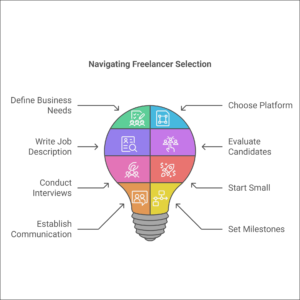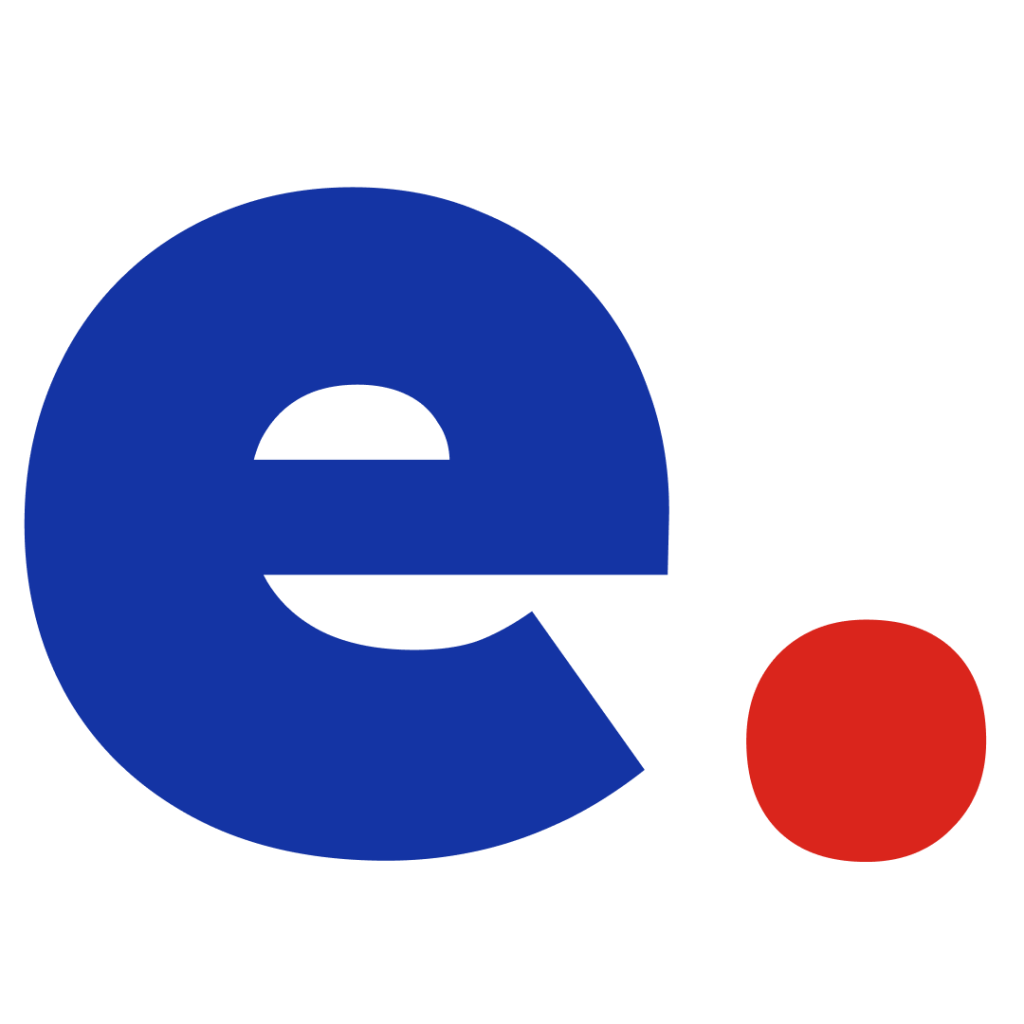Freelancers have become an indispensable resource for businesses of all sizes. From startups needing specialized skills to established companies scaling their operations, freelancers offer flexibility, expertise, and cost effectiveness. However, finding the right freelancer for your business needs can feel like navigating a complex maze.
With millions of freelancers available globally across platforms like Upwork, Fiverr, Toptal, and LinkedIn, it’s easy to get overwhelmed. Choosing the wrong freelancer can lead to missed deadlines, subpar work, and wasted resources. On the other hand, finding the perfect fit can unlock new opportunities, improve efficiency, and drive your business toward success.
In this article, we’ll explore a step-by-step guide to help you identify, evaluate, and hire the right freelancer for any business need.

Step 1: Define Your Business Needs Clearly
The first step to finding the right freelancer is understanding exactly what your business requires. Vague or undefined project scopes often lead to miscommunication and unsatisfactory outcomes.
How to Define Your Needs:
Identify the Objective: What are you trying to achieve? Whether it’s designing a logo, developing an app, or creating content, be specific about your goals.
Outline Deliverables: What will the freelancer need to provide? List concrete outputs, such as a completed website, 10 blog posts, or a series of social media graphics.
Set a Timeline: Determine your project’s deadlines and milestones.
Establish a Budget: Define how much you’re willing to spend and whether it’s a fixed price or hourly rate.
Example:
Objective: Improve website traffic through SEO.
Deliverables: Keyword research, 10 optimized blog posts, and a technical audit.
Timeline: 4 weeks.
Budget: $2,000.
By clearly defining your business needs, you’ll have a solid foundation for finding the right freelancer.
Step 2: Choose the Right Freelancing Platform
Different platforms cater to different types of freelancers and business needs. Selecting the right platform can significantly streamline your search.
Popular Freelance Platforms:
Upwork: Great for finding professionals across a wide range of industries, from writing to software development. Ideal for long term projects.
Fiverr: Best for quick, one-off tasks such as logo design, voiceovers, or social media graphics.
Toptal: Focuses on top-tier talent in areas like software development, finance, and design.
LinkedIn: Perfect for connecting with freelancers who have established professional networks.
99designs: Specifically for design projects, including logos, branding, and packaging.
How to Choose:
Use Upwork or Toptal for complex or ongoing projects.
Use Fiverr for smaller, budget-friendly tasks.
Use specialized platforms (e.g., 99designs) if your project requires niche skills.
Step 3: Write a Compelling Job Description
A well-written job description is key to attracting qualified freelancers. It sets clear expectations and helps you filter out candidates who don’t meet your criteria.
What to Include in a Job Description:
Project Overview: A summary of your business needs and objectives.
Responsibilities: Outline what you expect the freelancer to do.
Skills Required: Specify the technical and soft skills needed for the job.
Deliverables and Timeline: Clearly state what the freelancer must deliver and when.
Budget: Indicate your budget range to avoid mismatched expectations.
Example Job Description:
We’re looking for an experienced content writer to create 5 SEO-optimized blog posts for our e-commerce website. The topics will focus on digital marketing strategies for small businesses. The ideal candidate will have:
Proven experience in writing SEO content.
Knowledge of Google Analytics and keyword research tools.
A portfolio of past blog posts.
(Deliverables are due within 3 weeks, and our budget for this project is $750.)
A clear, detailed job description helps attract the right candidates while discouraging unqualified applicants.
Step 4: Evaluate Freelancer Profiles and Proposals
Once applications start rolling in, it’s time to evaluate candidates. This step is critical to finding the best freelancer for your business.
What to Look for in a Freelancer’s Profile:
Relevant Experience: Has the freelancer worked on similar projects before?
Portfolio: Review their work samples to ensure quality and style align with your needs.
Client Reviews: Check ratings and feedback from previous clients to gauge reliability and professionalism.
Skills and Certifications: Look for technical proficiencies or certifications relevant to your project.
Communication Skills: Assess how clearly and promptly they respond to your inquiries or project details.
Red Flags to Watch Out For:
Inconsistent quality in their portfolio.
Poor reviews or complaints about missed deadlines.
Generic or copy-pasted proposals that don’t address your specific project.
By carefully reviewing profiles and proposals, you can shortlist the candidates who best match your requirements.
Step 5: Conduct Interviews or Skill Tests
Even if a freelancer’s profile looks perfect, conducting an interview or skill test can help you verify their expertise and determine if they’re the right fit for your project.
Questions to Ask in an Interview:
Can you walk me through similar projects you’ve worked on?
How do you typically approach a project like this?
What tools or software do you use for your work?
How do you handle tight deadlines or unforeseen challenges?
What is your preferred communication style?
Skill Tests:
For certain roles, such as writing, design, or coding, you may ask candidates to complete a small paid task to demonstrate their skills.
For example:
Writers: Provide a brief writing assignment.
Designers: Request a quick mockup based on your project.
Developers: Share a coding problem relevant to the job.
Interviews and skill tests add an extra layer of assurance that you’re hiring the right freelancer.
Step 6: Start with a Small Project
If you’re unsure about committing to a freelancer for a long-term project, start with a smaller task to test the waters.
Benefits of a Trial Project:
Evaluate the freelancer’s work quality and professionalism.
Test their communication and reliability.
Determine if their style aligns with your expectations.
For example, if you need a full website redesign, start by hiring a freelancer to create a wireframe or redesign a single page.
Step 7: Establish Clear Communication Channels
Effective communication is critical for a successful freelancer-business relationship. Miscommunication can lead to delays, rework, and frustration for both parties.
Tips for Clear Communication:
Use Project Management Tools: Platforms like Trello, Asana, or Slack can help streamline communication and task tracking.
Set Regular Check-Ins: Schedule weekly or bi-weekly updates to review progress and address any issues.
Clarify Expectations: Ensure the freelancer understands the project scope, timeline, and deliverables.
By fostering open and transparent communication, you’ll create a collaborative environment that ensures success.
Step 8: Set Milestones and Payment Terms
To keep the project on track, establish clear milestones and payment terms upfront.
How to Set Milestones:
Break the project into smaller, manageable phases (e.g., research, first draft, revisions).
Define specific deliverables for each milestone.
Set due dates for each phase.
Payment Terms:
Use escrow systems on freelance platforms to secure payments.
Offer partial payments upon completing milestones.
Avoid paying in full upfront unless the freelancer is highly trusted.
Milestones ensure accountability, while structured payments minimize financial risks.
Step 9: Provide Constructive Feedback
Providing feedback is essential to ensure the freelancer delivers work that meets your expectations. Constructive feedback also helps build a positive working relationship.
How to Provide Feedback:
Be specific: Instead of saying “This isn’t what I wanted,” explain why and suggest improvements.
Focus on solutions: Offer actionable steps to address issues.
Be timely: Provide feedback as soon as possible to avoid delays.
Positive feedback is equally important—acknowledge the freelancer’s strengths and contributions to keep them motivated.
Step 10: Build Long-Term Relationships
If a freelancer exceeds your expectations, consider building a long-term relationship with them. Reliable freelancers who understand your business can save you time, effort, and money on future projects.
How to Foster Long-Term Relationships:
Offer repeat projects or retainers for ongoing work.
Provide referrals or endorsements to help grow their freelance business.
Maintain regular communication to stay on their radar.
Long-term relationships with freelancers can lead to more consistent results and a smoother collaboration process.
Conclusion
Finding the right freelancer for your business needs doesn’t have to be daunting. By defining your requirements, choosing the right platform, crafting a clear job description, and carefully evaluating candidates, you can ensure a successful match.
Remember, the key to a productive freelancer-business relationship lies in clear communication, mutual respect, and setting realistic expectations. Whether you need a one-time task completed or ongoing support, the right freelancer can help your business grow and thrive.
Start your search today with confidence, and watch how the right freelancer transforms your vision into reality.
